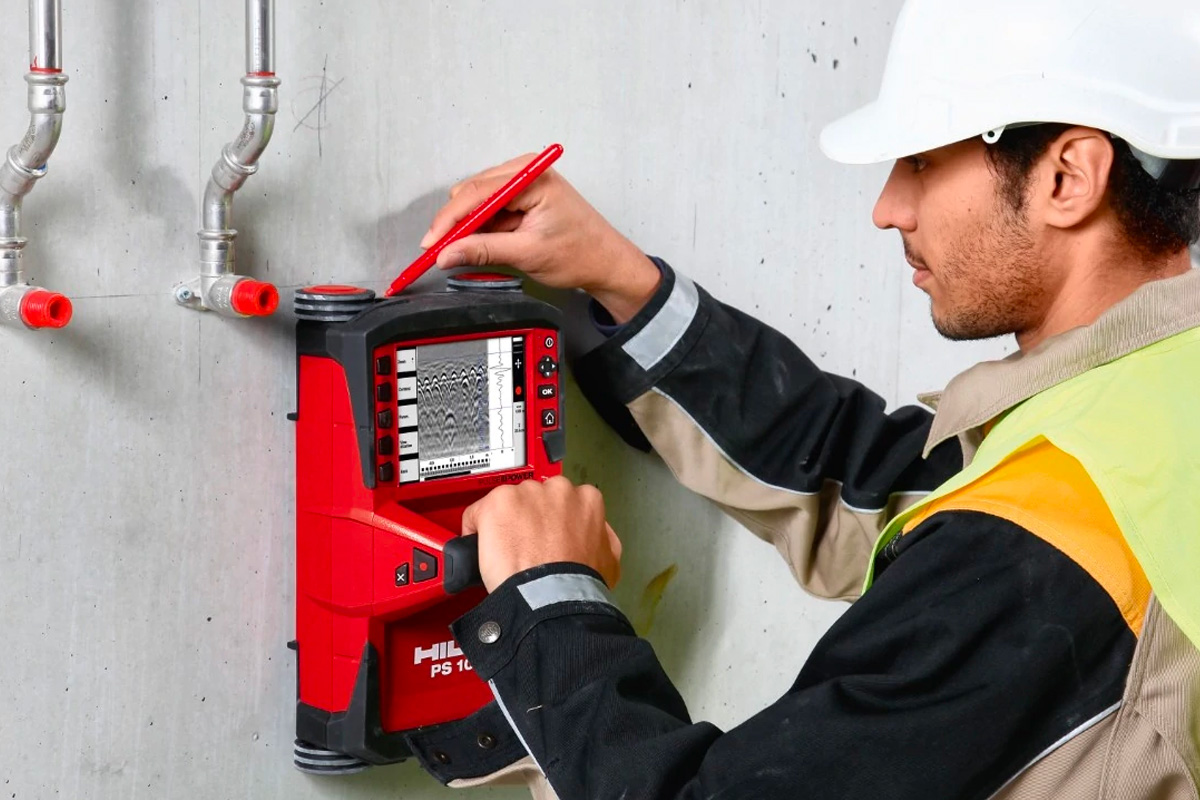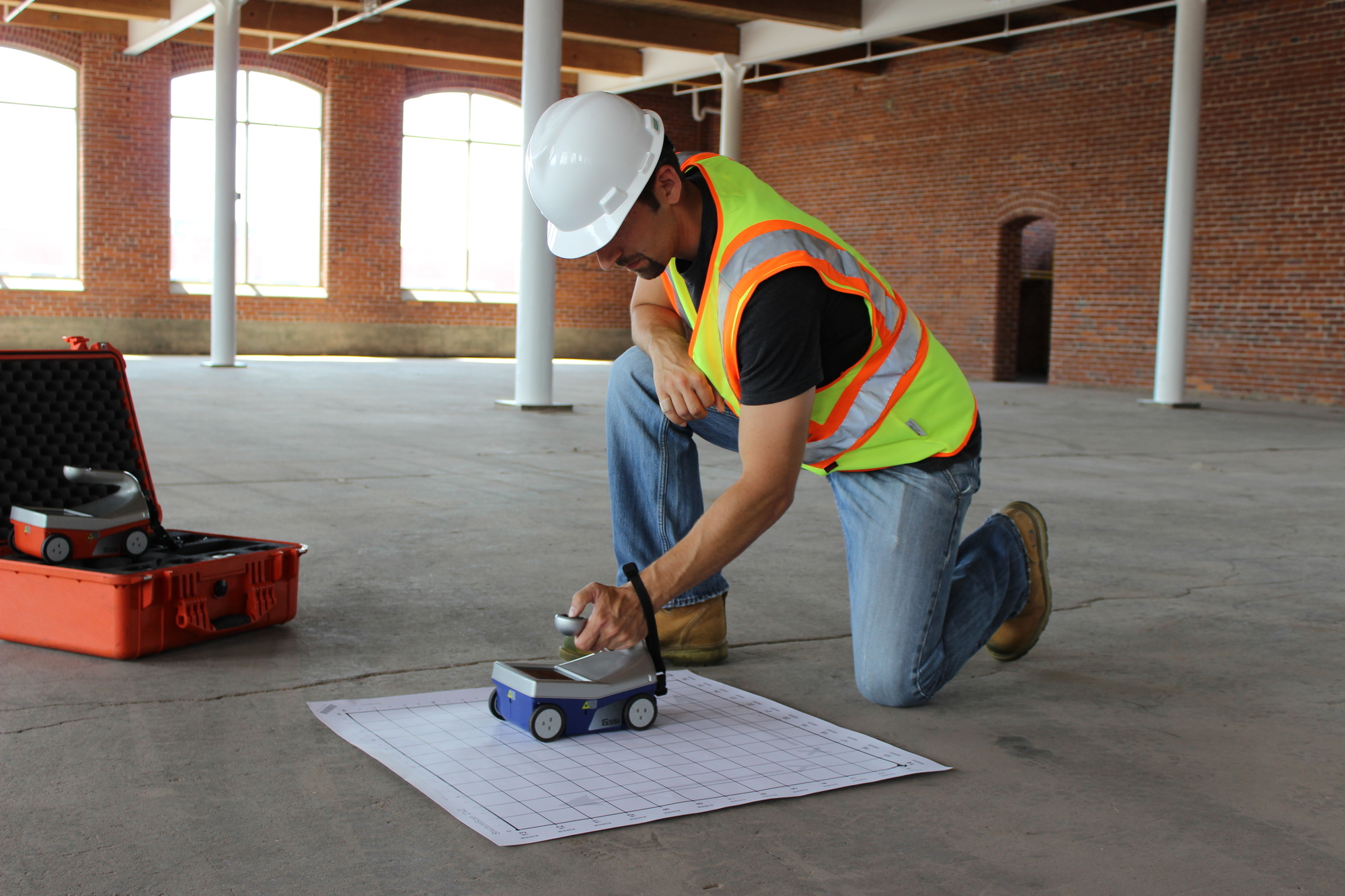RainierGPR Service Areas: Comprehensive Coverage for Concrete Scanning
RainierGPR Service Areas: Comprehensive Coverage for Concrete Scanning
Blog Article
Concrete Scanning: A Critical Action In The Direction Of Guaranteeing Structural Integrity and Safety
In the realm of building and construction and facilities upkeep, the relevance of concrete scanning can not be overemphasized. By utilizing innovative innovation and methodologies, concrete scanning offers as a pivotal device in making certain that the stability and safety and security of bridges and buildings are maintained to the highest requirements.
Importance of Concrete Scanning
Concrete scanning plays a crucial duty in ensuring the architectural honesty and safety of structures and infrastructure jobs. By making use of advanced technologies such as ground-penetrating radar (GPR) and electro-magnetic induction, experts can non-destructively evaluate concrete frameworks to find potential flaws, voids, embedded objects, and reinforcement design. This procedure enables early discovery of abnormalities that could jeopardize the stability of a framework, avoiding expensive problems and making certain the safety of residents.
Concrete scanning is particularly necessary throughout the preparation and building and construction stages of a task. Prior to exploration, cutting, or coring into concrete, scanning helps determine the exact places of rebar, post-tension wires, and various other ingrained aspects, minimizing the danger of accidental hits that could lead to structural weaknesses. Additionally, concrete scanning aids in quality assurance by verifying the thickness of concrete covers and identifying any discrepancies that might influence the overall toughness of the framework. Eventually, investing in concrete scanning services is not just a positive step to reduce risks but also a fundamental action towards maintaining the long-term safety and security of buildings and infrastructure.
Modern Technology for Concrete Evaluation

Advantages of Early Discovery
Timely detection of structural issues can substantially mitigate risks and make sure the durability of building and construction tasks. By determining possible troubles early on in the construction process, stakeholders can take aggressive measures to deal with issues prior to they intensify right into bigger and a lot more expensive issues. One of the vital advantages of early detection is the prevention of structural failures, which can pose significant safety and security threats and bring about job delays and financial losses.
Moreover, very early discovery permits timely repairs and maintenance, which can aid prolong the life expectancy of the framework. By attending to problems promptly, building and construction teams can avoid costly fixings or their website also the need for early substitute of architectural elements. This aggressive approach not only saves time and cash but also improves the total security and longevity of the building and construction job.
Additionally, early discovery can improve task planning and decision-making by giving stakeholders with important insights into the problem of the structure. Equipped with this info, job supervisors can make educated selections concerning building and construction materials, timelines, and methods, resulting in much more effective and reliable task results.
Ensuring Structural Security
Making certain the architectural security of a building and construction project is vital to its safety and long life. Structural security describes the ability of a building or facilities to preserve its kind and function under various tons and ecological problems. To attain this, complete evaluation and tracking of the framework are crucial. Concrete scanning plays an important function in guaranteeing architectural security by detecting potential issues such as spaces, delamination, or support deterioration look at this web-site that can endanger the honesty of the framework with time.
By utilizing innovative scanning modern technologies like ground-penetrating radar (GPR) and electromagnetic induction, construction specialists can non-invasively evaluate concrete structures to determine areas of concern under the surface area. This proactive method enables the very early discovery of weak points or flaws, allowing prompt repairs or support to stop structural failings.
Routine concrete scanning throughout different construction phases and throughout the life process of a structure can aid preserve its security, minimize threats, and guarantee the safety of passengers. By prioritizing architectural stability via concrete scanning, building tasks can improve their resilience and sturdiness, eventually adding to greater safety and security and longevity.
Avoiding Crucial Failings
Carrying out routine examinations, such as concrete scanning, can reveal covert problems like spaces, splits, or deterioration that might endanger the honesty of a structure. By utilizing advanced scanning innovations like Ground Passing through Radar (GPR) or Concrete X-ray, designers can non-destructively analyze the problem of concrete and recognize weak factors that require reinforcement or repair.

Verdict
In visit homepage conclusion, concrete scanning plays a vital duty in making certain structural honesty and security by making use of sophisticated innovation for very early detection of potential issues. This aggressive method aids prevent crucial failures and makes certain the security of frameworks. It is necessary to focus on concrete assessment as a common method to safeguard the long life and safety and security of structures and facilities.
Concrete scanning plays an important role in ensuring the architectural stability and security of structures and facilities projects. Additionally, concrete scanning aids in high quality control by validating the thickness of concrete covers and identifying any type of disparities that may influence the general sturdiness of the structure. Concrete scanning plays a crucial role in making sure architectural security by identifying potential problems such as spaces, delamination, or support deterioration that can compromise the stability of the structure over time.

In conclusion, concrete scanning plays a vital function in guaranteeing structural integrity and safety by making use of advanced technology for early detection of potential concerns.
Report this page